Abstract
Three pigeons learned to match three colors in a matching-to-sample procedure. The sample hue was presented on the center one of three keys, and the comparison hues were presented on the side keys. Forty responses on the center key produced the stimuli on the side keys and left the sample on the center key. A single response on the correct side key produced 3-sec access to grain, which was followed by a 25-sec intertrial interval. A correction procedure was employed when an error was committed. Before attaining asymptotic levels, there was no evidence of learning, responses were independent of the preceding response, and distributions of errors in four-trial blocks were binomial. Distributions of error runs, runs of various lengths, autocorrelations of errors of several lags, alternations of correct responses and errors, etc., were shown to fit Bower's (1961) all-or-none model better than a gradual learning model of Bush and Sternberg (1959). A transfer test employing a novel color showed only transitory degradation of performance.
Full text
PDF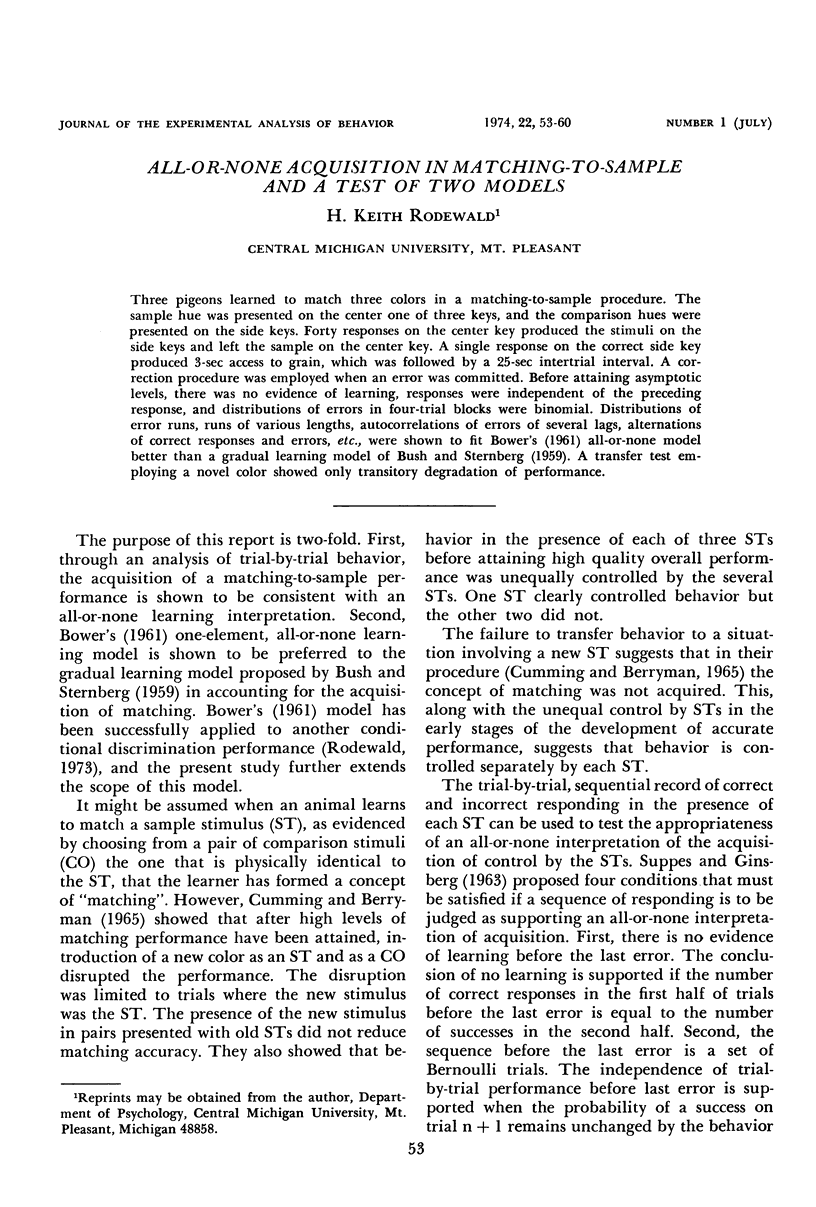
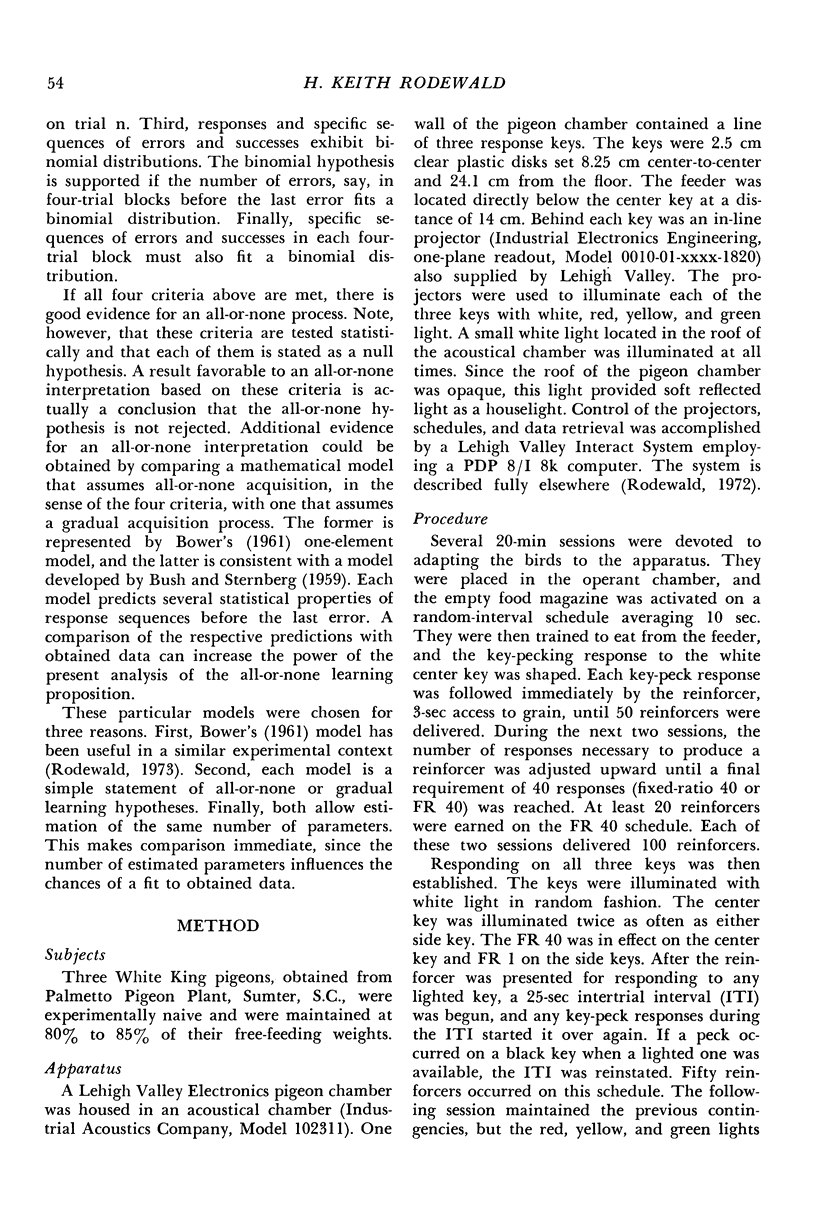
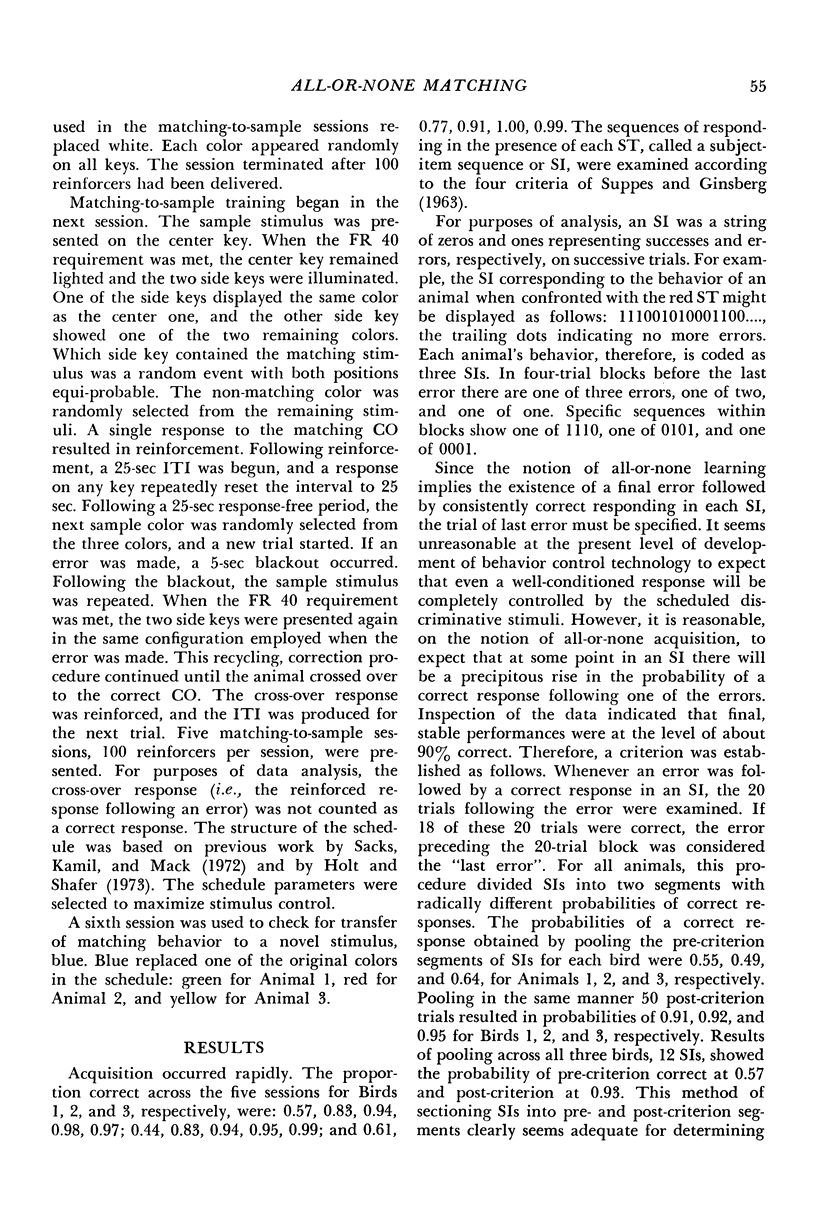
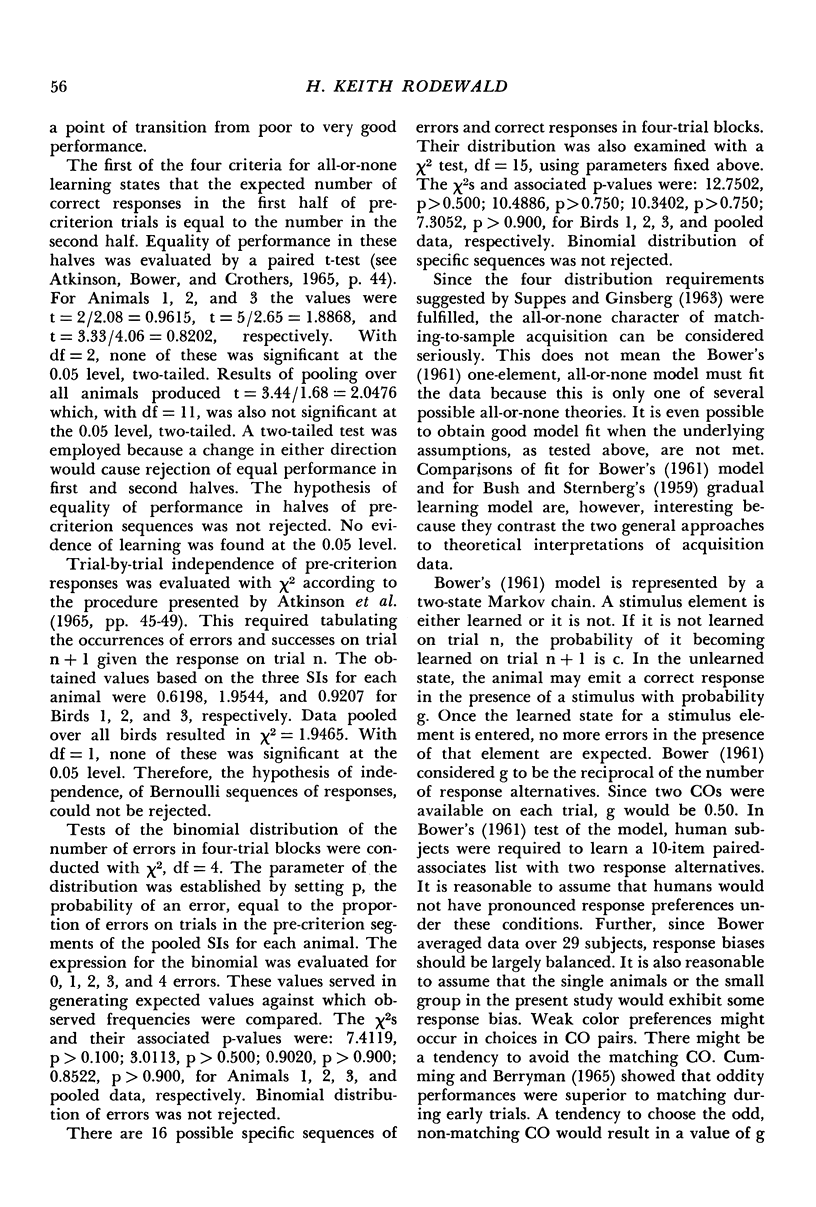
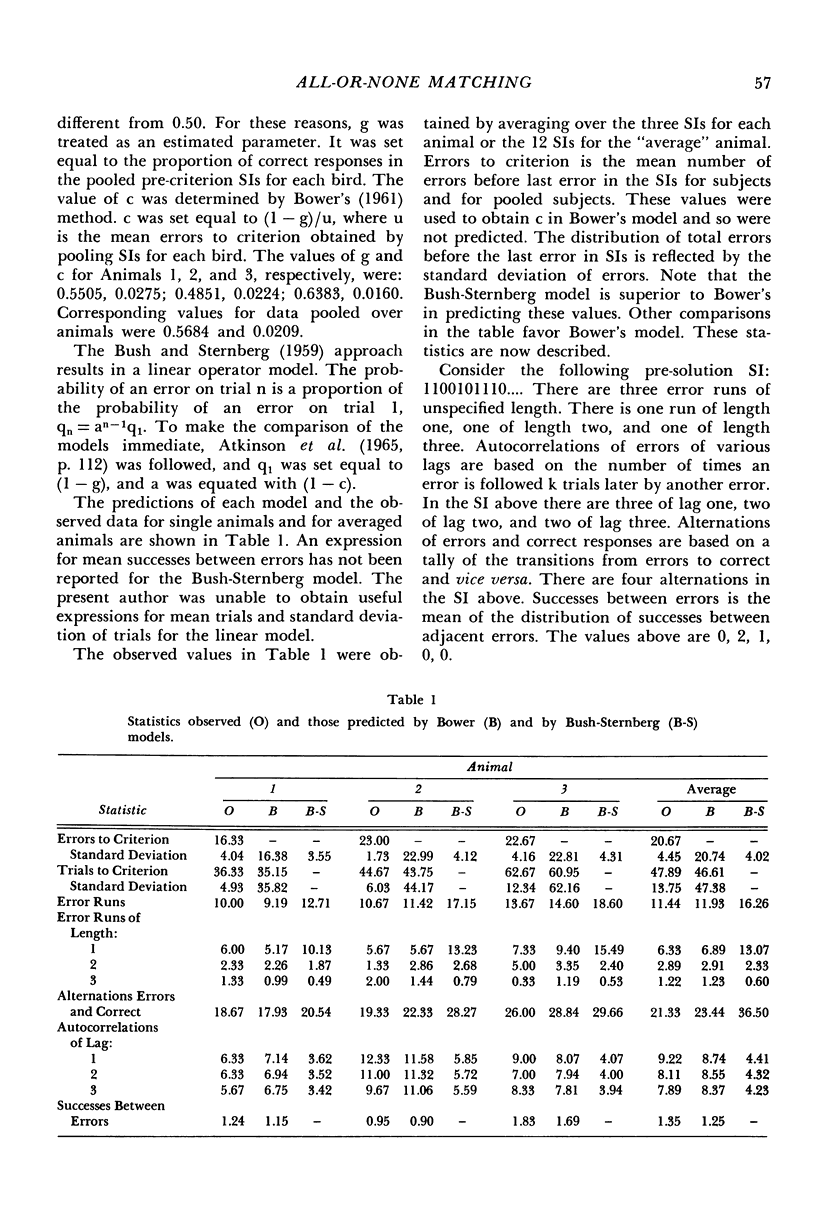
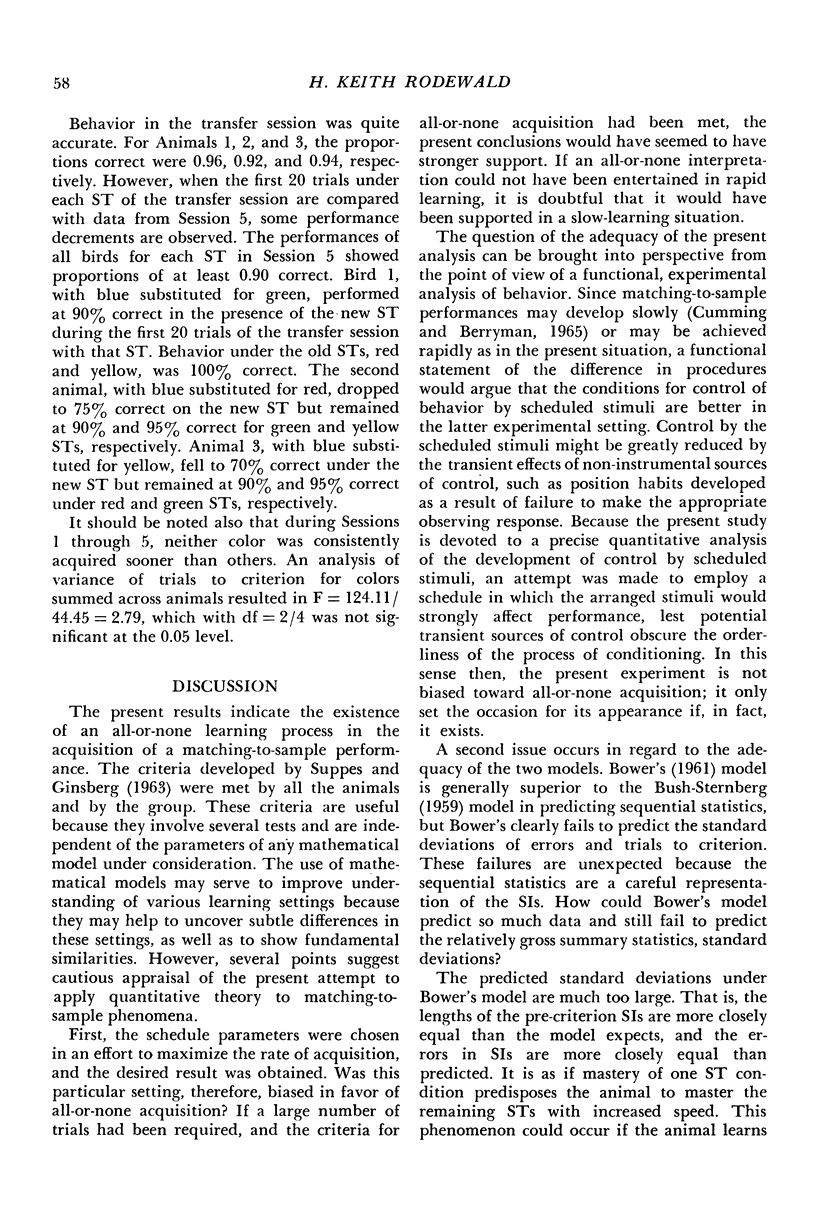
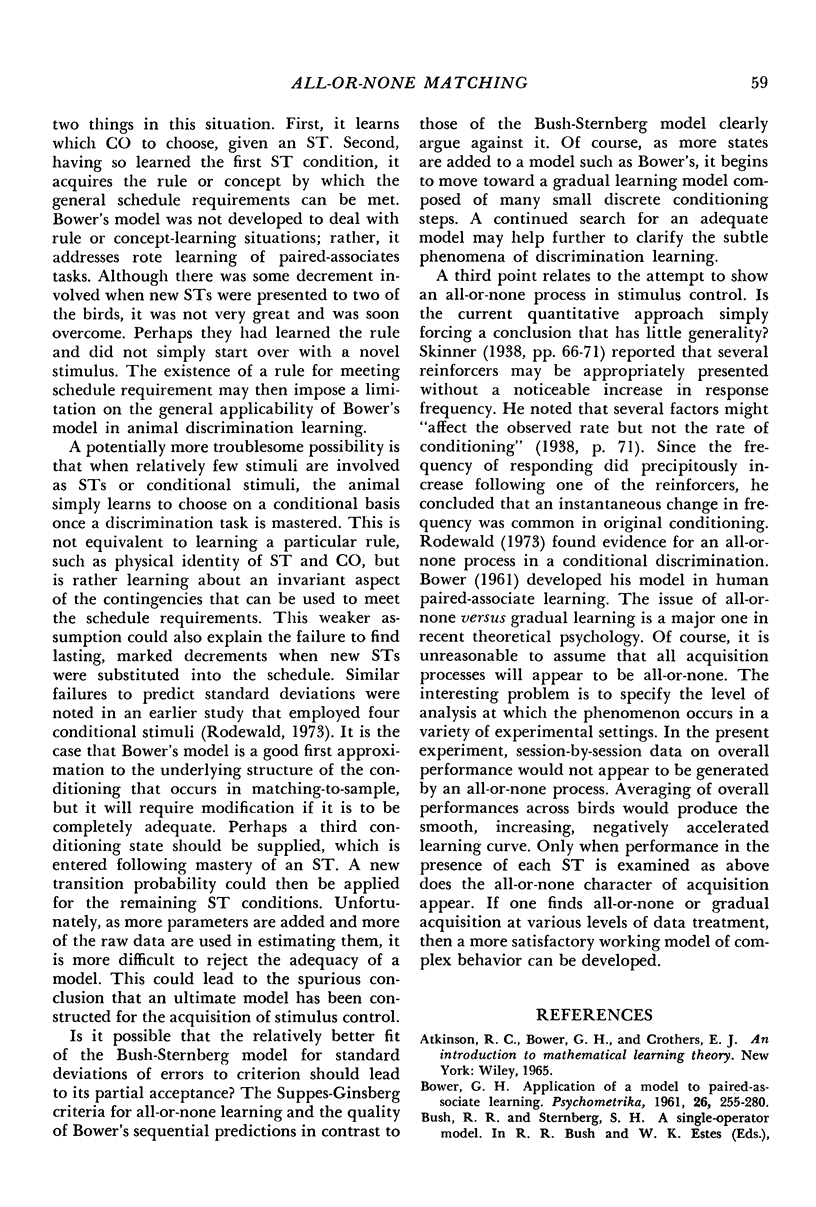
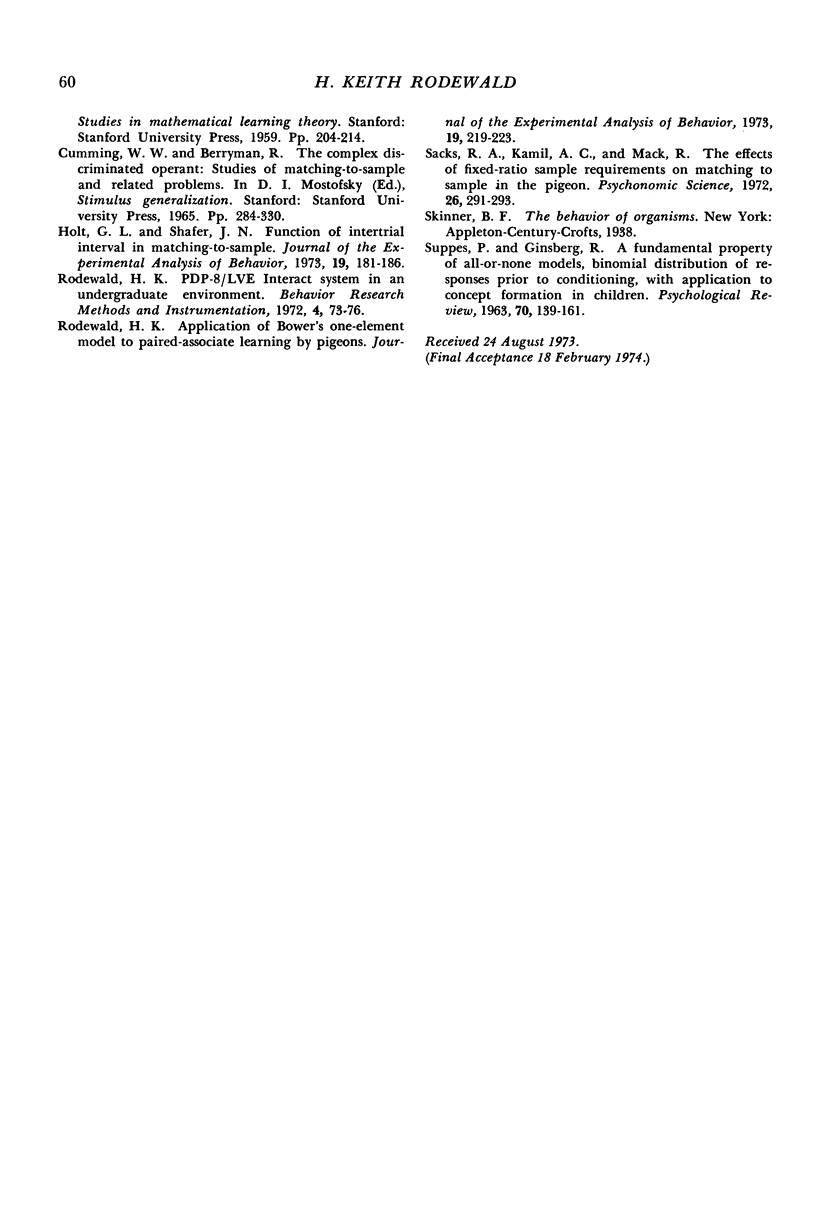
Selected References
These references are in PubMed. This may not be the complete list of references from this article.
- Holt G. L., Shafer J. N. Function of intertrial interval in matching-to-sample. J Exp Anal Behav. 1973 Jan;19(1):181–186. doi: 10.1901/jeab.1973.19-181. [DOI] [PMC free article] [PubMed] [Google Scholar]
- Rodewald H. K. Application of Bower's one-element model to paired-associate learning by pigeons. J Exp Anal Behav. 1973 Mar;19(2):219–223. doi: 10.1901/jeab.1973.19-219. [DOI] [PMC free article] [PubMed] [Google Scholar]
- SUPPES P., GINSBERG R. A fundamental property of all-ornone models, binomial distribution of responses prior to conditioning, with application to concept formation in children. Psychol Rev. 1963 Mar;70:139–161. doi: 10.1037/h0040894. [DOI] [PubMed] [Google Scholar]


